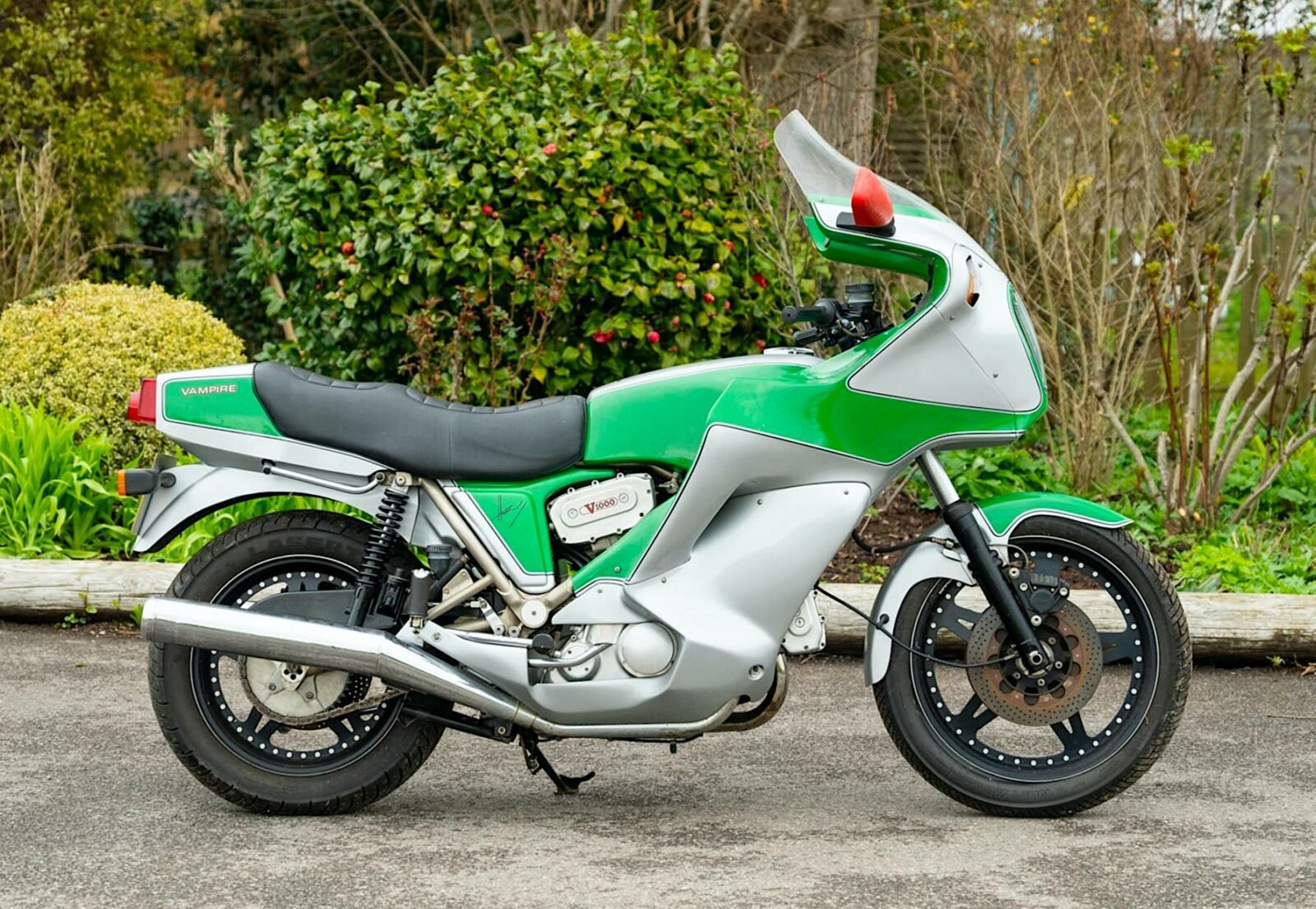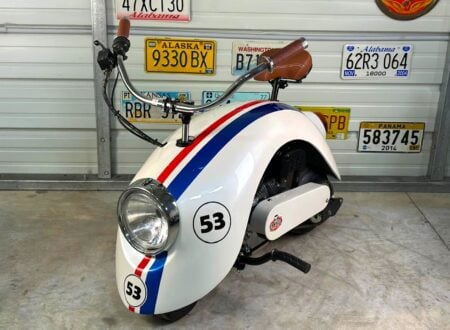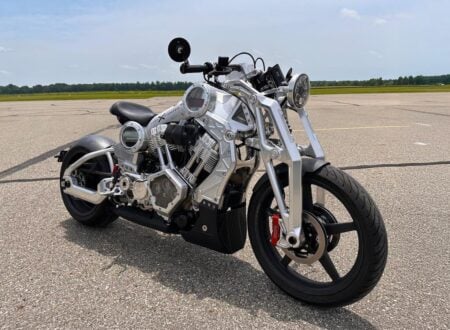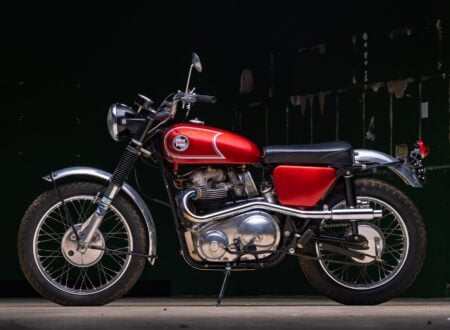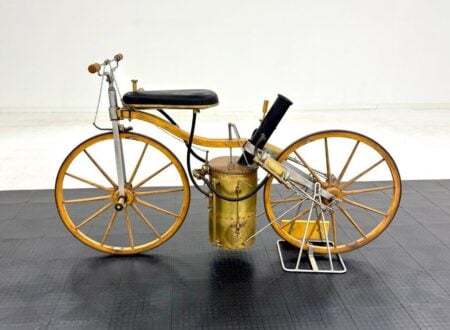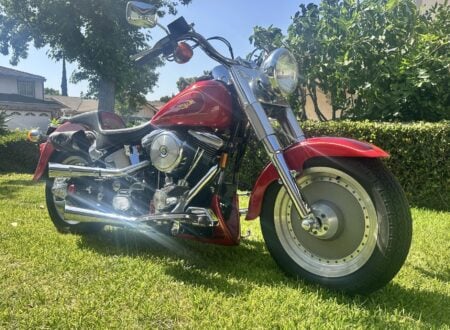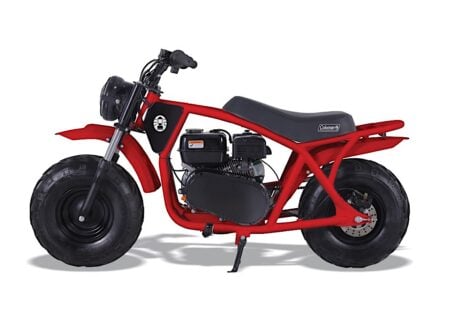The Hesketh Vampire is an exceptionally rare British motorcycle, in fact just 40 were made. The company was founded by Lord Hesketh of Formula 1 and James Hunt fame, who wanted to develop a world class British superbike to challenge the all-conquering Japanese brands.
The Vampire had the potential to be a major shot across the bow of the Japanese Big Four, it’s powered by a Weslake-designed 1000cc V-twin with double overhead cams, four valves per cylinder, and it rode on Marzocchi with Brembo disc brakes front and back.
Fast Facts – The Hesketh Vampire
- The Hesketh Vampire is the motorcycle that rose from the grave of the Hesketh V1000, both bikes have a lot in common, and both were ultimately undone by their high asking prices at a time when the Japanese Big Four had made superbikes almost cheap by comparison.
- Lord Alexander Hesketh was a fiercely patriotic Brit, and it pained him to see the big British motorcycle marques all falling by the way side as new imported motorcycles dominated the market. He began planning to start his own superbike manufacturing company in 1974.
- Lord Hesketh commissioned specialist engineering firm Westlake to design a new 1000cc 90º V-twin with double overhead cams, four valves per cylinder, which would produce 82+ hp at 6,800 rpm and 78 lb ft of torque at 5,400 rpm.
- Due in large part to the cost and lack of development time, the first motorcycle from the company, the Hesketh V1000 only sold 140 units before the firm went under. A new company was later formed to sell the Hesketh Vampire, which was closely based on the V1000, with 40 selling before this firm also collapsed.
Lord Hesketh
Lord Hesketh’s interest in motorsport lead him to establish Hesketh Racing in 1972 when he was just 22 years old. Funded by his personal fortune, the Formula One racing team was one of the last privateer teams in the sport. Hesketh Racing enjoyed a Grand Prix win in 1975 with driver James Hunt, but financial constraints forced the team to fold in 1978, leaving a lasting impression on Formula One.
Above Video: This short film by Sky Sports tells the story of Lord Hesketh’s Formula One team, including recent footage of Hesketh being interviewed by Jenson Button talking about the history in his own words.
Following Hesketh Racing’s closure, Lord Hesketh turned to motorcycles, founding Hesketh Motorcycles in 1980. He aimed to fill a market gap for a luxury, high-performance British motorcycle brand in the spirit of Brough Superior or Vincent HRD.
The company’s first motorcycle, the Hesketh V1000, was released in 1982. Designed with high-quality components, the V1000 faced reliability issues and struggled in the market due to its high price tag. Consequently, the company liquidated in 1983.
Undeterred, Lord Hesketh and his team continued refining the V1000 design. The Hesketh Vampire was launched in 1984, featuring an improved engine, a distinctive half-fairing, and increased power output. Despite these enhancements, financial struggles persisted, and the company ceased motorcycle production in 1985.
The Hesketh Vampire
After releasing the Hesketh V1000 in 1982, Hesketh Motorcycles faced significant financial challenges. The high price tag of the V1000, combined with its aforementioned performance issues and lack of development had made it a hard sell. The company produced only 140 or so V1000s before it went into receivership.
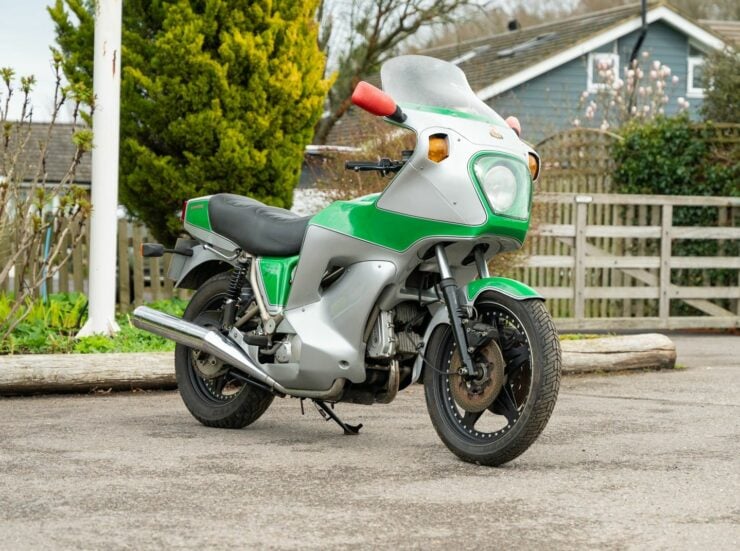

This was not the end of the story for Hesketh Motorcycles. Lord Hesketh, determined to salvage his dream, restructured the company as Hesketh Engineering Ltd. and worked out many of the kinks in the engine design of the V1000 with his engineering team.
The Vampire featured an improved engine, with modifications to the cooling system, oil flow, and valve train to enhance reliability and performance. The motorcycle’s power output was slightly increased to 86 bhp, and the top speed was raised to approximately 138 mph.
The Vampire retained the V1000’s high-quality components and distinctive design features, making it an attractive option for motorcycle enthusiasts. It was built around a nickel-plated tubular steel frame with the all-alloy engine acting as a stressed member for improved rigidity.
Marzocchi forks were fitted up front and a pair of matching Marzocchi shock absorbers were fitted in the rear. Twin 280mm Brembo brakes were fitted up front, with a single 280mm Brembo disc in the rear.
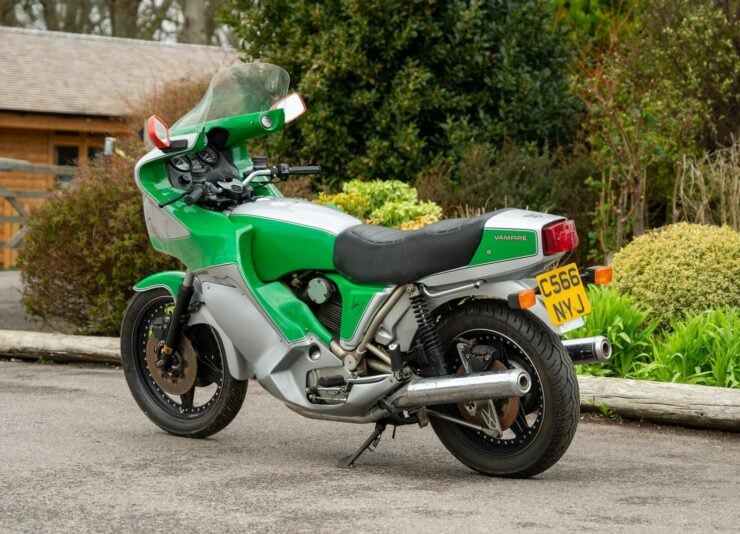

Despite the improvements made to the Vampire, Hesketh Motorcycles continued to struggle financially. The company faced an uphill battle to establish itself in a market dominated by more established brands without the recent bad press of the earlier Hesketh company.
The Vampire’s relatively high cost and limited production further hindered its success. Approximately 40 were made before the company ceased operations. The surviving examples of the Hesketh motorcycles are now collectible, and sought after by enthusiasts with a taste for unusual motorcycles with an interesting backstory.
Though that might sound like the end of the road, Hesketh is one of those companies that just refuses to stay dead. The original Hesketh development engineer Mick Broom continued working on the V1000 and Vampire models after the company had officially ceased operations, he offered mechanical work, upgrades, and spare parts for Hesketh owners and even released a number of new motorcycle designs including the Hesketh Vulcan and the Vortan.
Broom sold the rights to the company name in 2010 and an all new motorcycle called the Hesketh 24 was developed by the new owners, and as of 2022 they’re producing a new 450cc model.
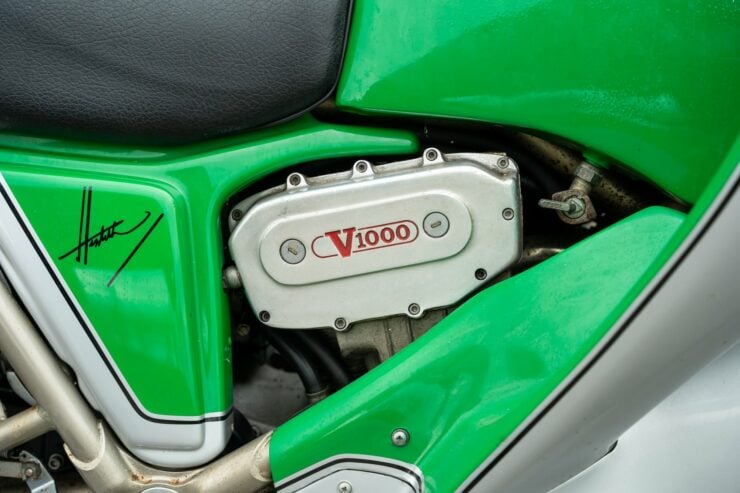

The 1985 Hesketh Vampire Shown Here
As noted above, this is believed to be the final Hesketh Vampire ever made, making it a motorcycle of particular interest to collectors.
This Vampire is finished in green and silver with contrasting red wing mirrors, it has a black double seat, and it rides on black 19″ alloy wheels shod with Metzeler Lasertec tires.
The listing notes that this motorcycle was dry-stored for many years and the engine has recently been recommissioned by the experts over at Hesketh Motorcycles.
It’s now accompanied by the factory workshop manual, it has 4,326 miles on the odometer, and it’s being offered for sale out of Sussex in the United Kingdom on Collecting Cars.
If you’d like to read more about this unusual British motorcycle or register to bid you can visit the listing here.
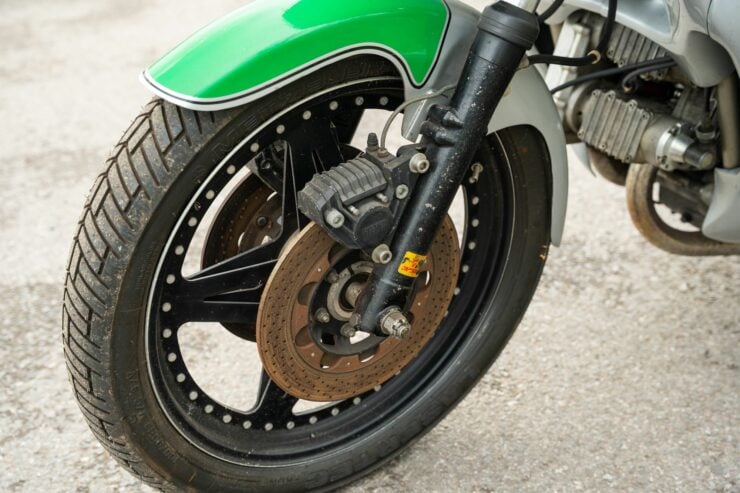
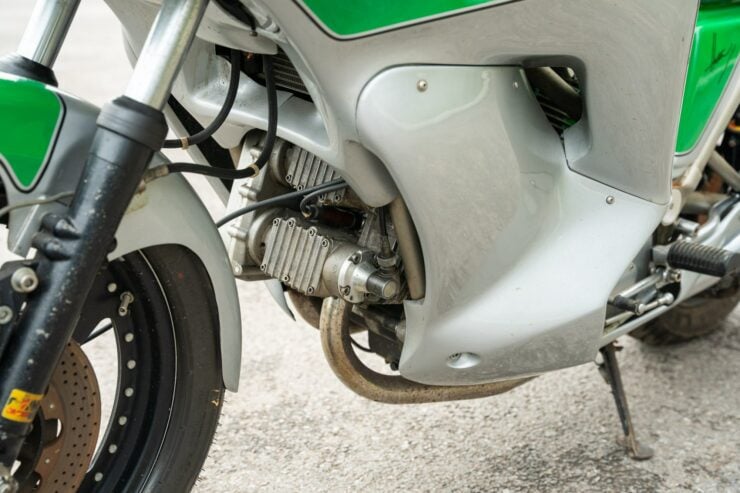
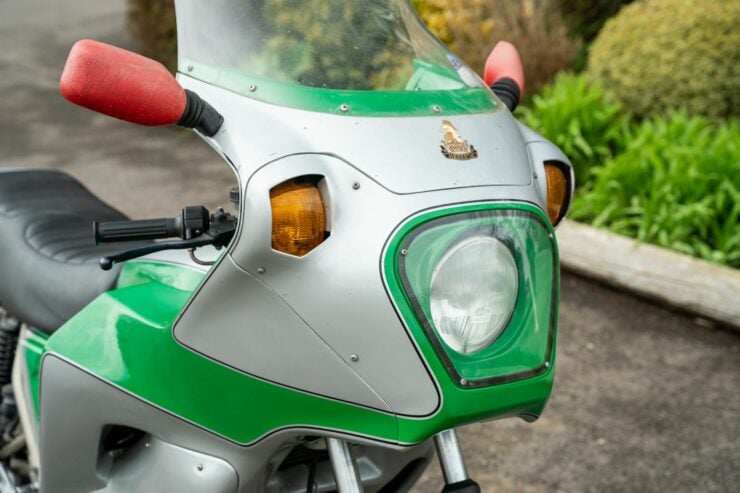
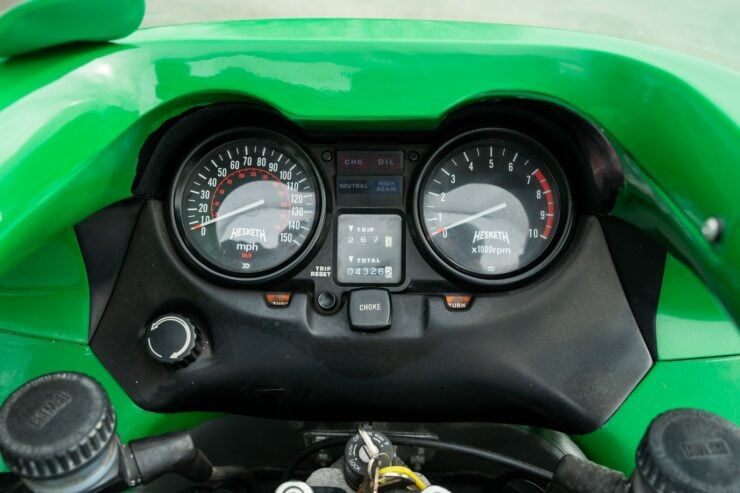
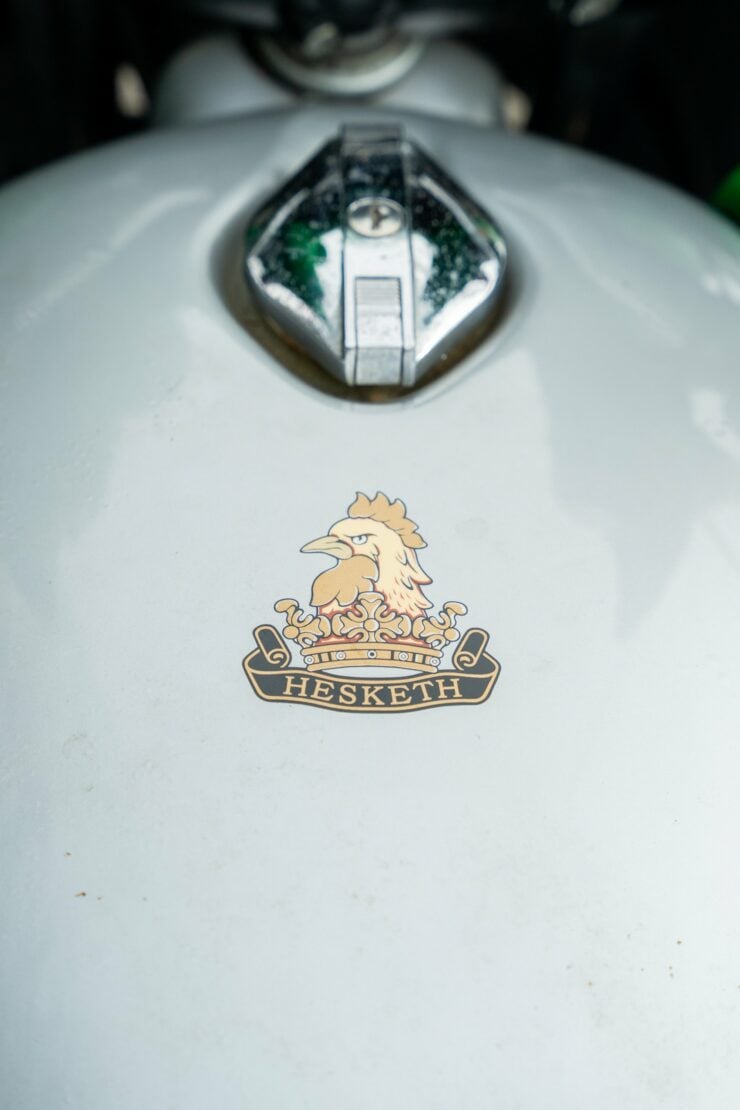
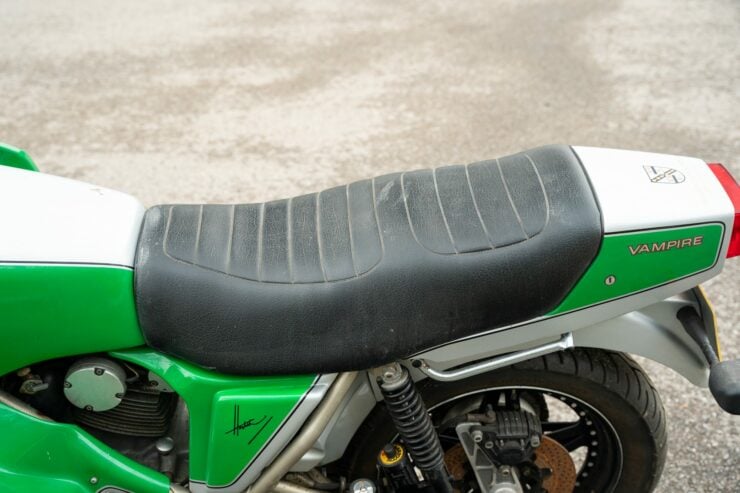
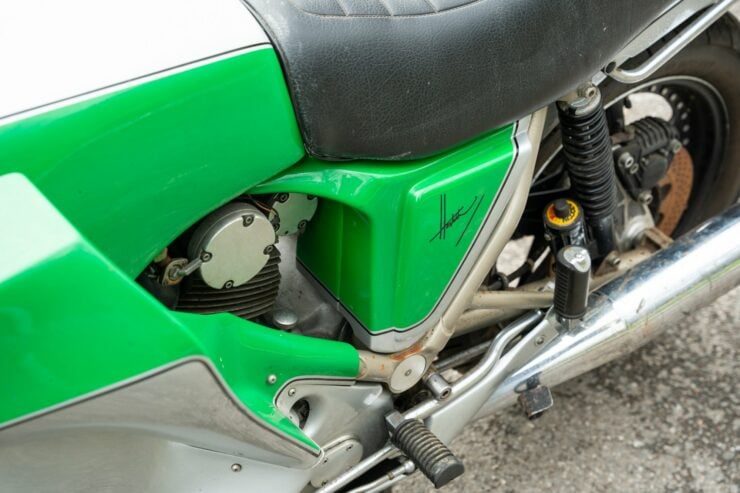
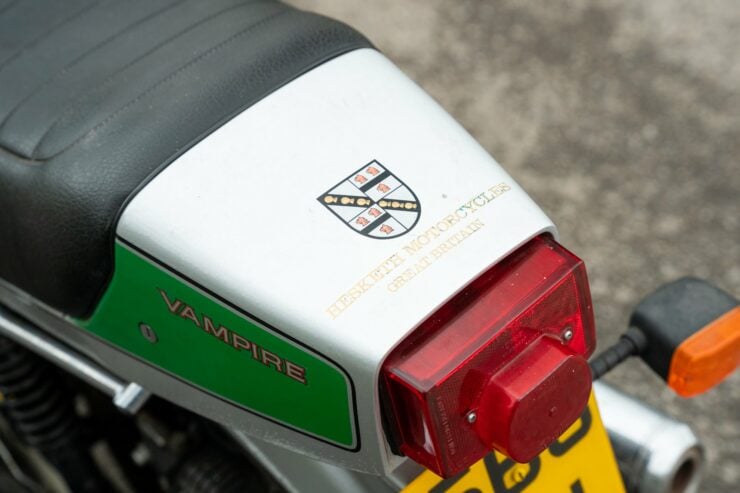
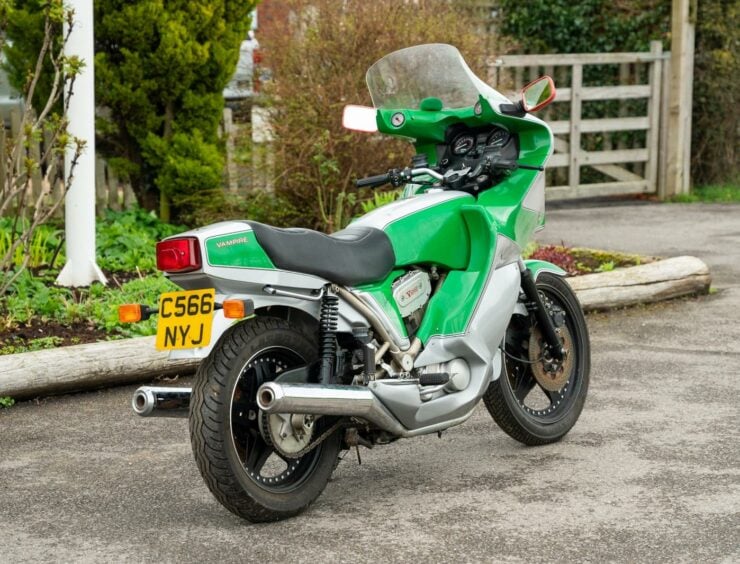
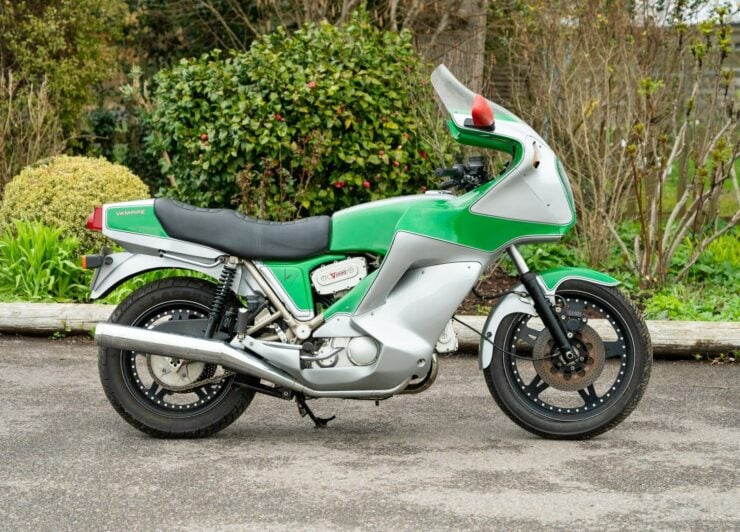

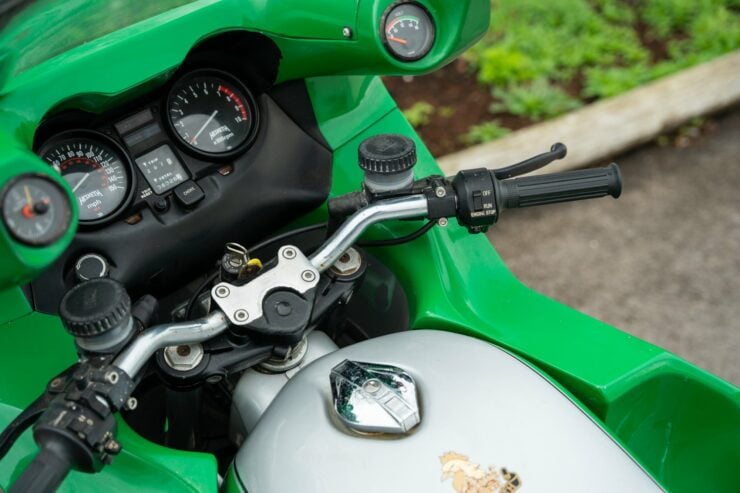
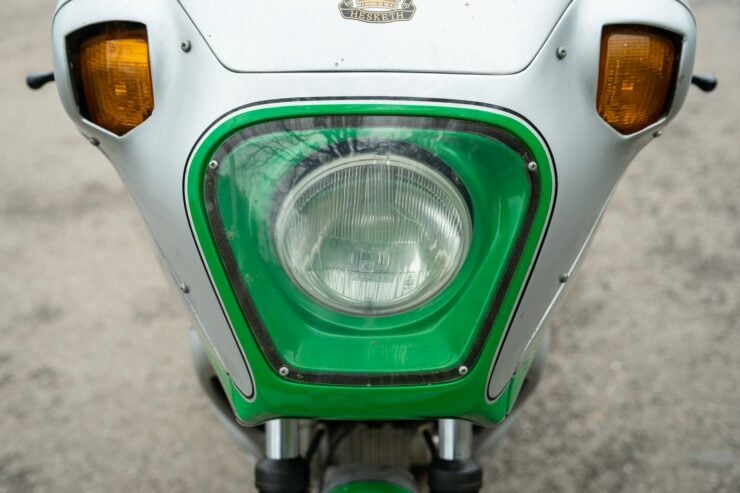
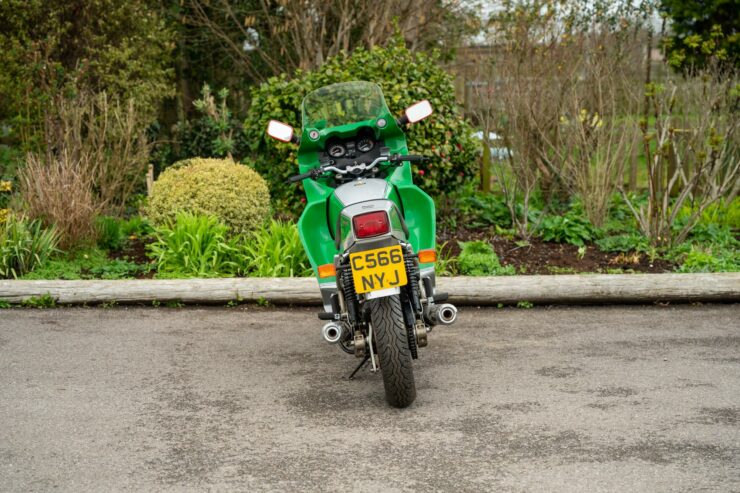
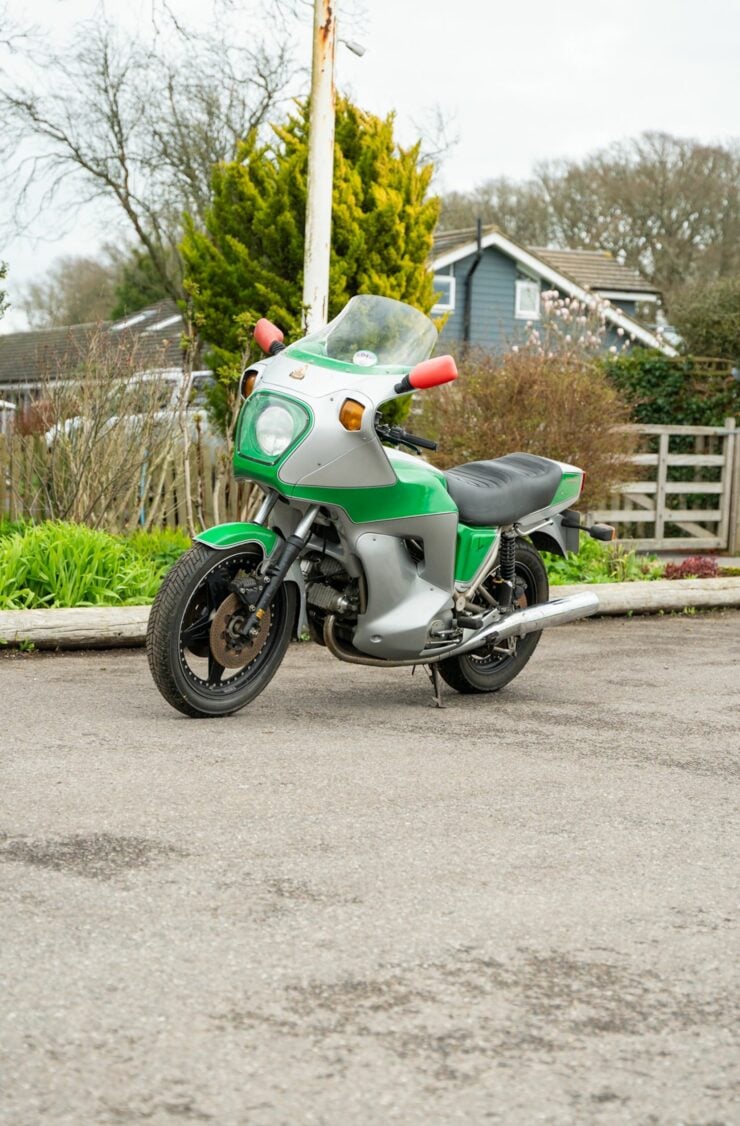
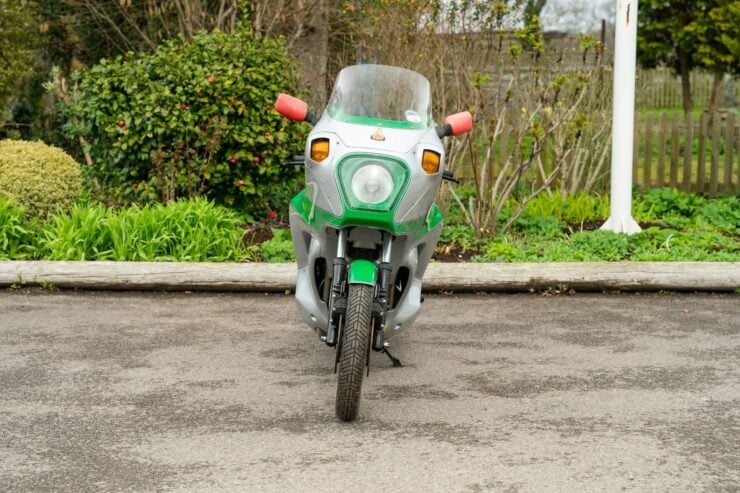

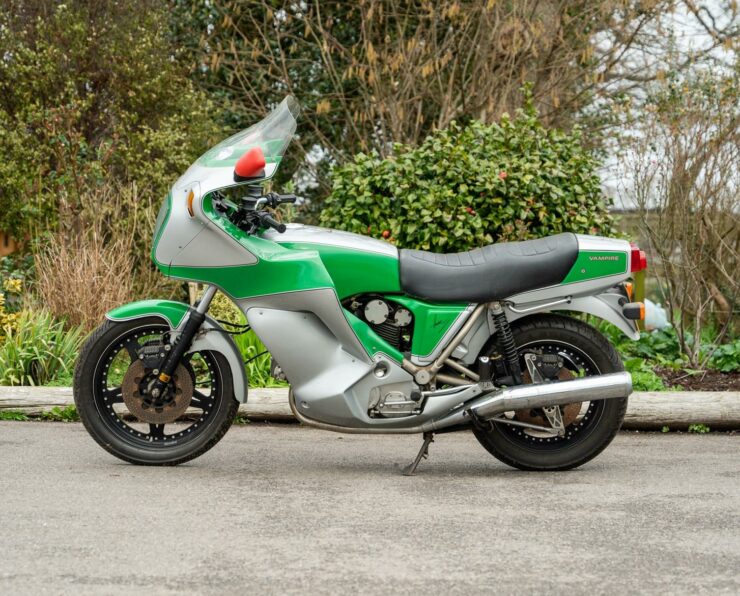
Images courtesy of Collecting Cars

